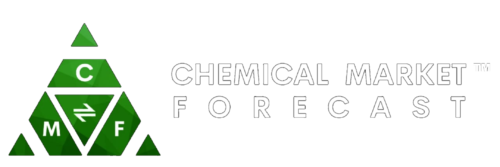Global Nanoceramic Powder Market
Nanoceramic powder refers to a type of ceramic powder that has a particle size in the nanometer range. Nanoceramic powders exhibit unique properties such as high surface area, high reactivity, and enhanced mechanical and thermal properties compared to traditional ceramic powders. Nanoceramic powders are widely used in various applications, including coatings, composites, electronics, and biomedical devices.
The global nanoceramic powder market is expected to experience significant growth in the coming years. One of the primary drivers of the nanoceramic powder market is the growing demand for nanoceramic powders in the coatings industry. Nanoceramic powders are used in the coatings industry to enhance the performance of coatings, such as improving scratch resistance, adhesion, and wear resistance. Additionally, nanoceramic powders can also improve the aesthetic appearance of coatings, such as providing a glossy or matte finish. The demand for nanoceramic powders in the coatings industry is driven by the increasing demand for high-performance coatings in various applications, including automotive, aerospace, and electronics, among others.
Another key driver of the nanoceramic powder market is the growing demand for nanoceramic powders in the electronics industry. Nanoceramic powders are used in the electronics industry for applications such as electronic packaging, capacitors, and sensors, among others. The demand for nanoceramic powders in the electronics industry is driven by the increasing demand for miniaturization of electronic devices and the need for high-performance materials that can withstand extreme temperatures and harsh environments.
The Asia Pacific region is expected to dominate the nanoceramic powder market during the forecast period. The region has the largest electronics industry in the world, with countries such as China, Japan, and South Korea, among others, driving the demand for nanoceramic powders in the region. Additionally, the region is also home to the largest automotive market in the world, with countries such as China, India, and Japan, among others, driving the demand for high-performance coatings that use nanoceramic powders.
Some of the key players operating in the global nanoceramic powder market include 3M Company, American Elements, Inc., Inframat Corporation, Nanophase Technologies Corporation, Nanostructured & Amorphous Materials, Inc., and Tosoh Corporation, among others. These companies are focused on expanding their product portfolios and developing new and innovative products to meet the evolving needs of their customers. Additionally, these companies are also focused on expanding their geographic presence through strategic partnerships and acquisitions.
Some of the drawbacks of the nanoceramic powder market include: High production costs: The production of nanoceramic powders requires specialized equipment and processes that are often expensive. This can result in higher production costs compared to traditional ceramic powders, which can limit their adoption in some applications. Safety concerns: Nanoceramic powders can pose safety concerns due to their small particle size, high surface area, and potential toxicity. These powders can be inhaled or absorbed through the skin, which can cause health problems such as lung damage and inflammation. Therefore, proper safety measures need to be taken when handling nanoceramic powders to ensure the safety of workers and the environment. Limited understanding of long-term effects: While nanoceramic powders have been extensively studied, their long-term effects on human health and the environment are not yet fully understood. This creates uncertainty and risk in the adoption of nanoceramic powders in some applications. Regulatory hurdles: The adoption of nanoceramic powders in some applications may be hindered by regulatory hurdles. Many countries have regulations in place that govern the use of nanomaterials, and meeting these regulations can be time-consuming and costly. Limited commercialization: Despite the potential benefits of nanoceramic powders, their commercialization has been limited in some applications due to the lack of scalability and cost-effectiveness of the production process.
In conclusion, the global nanoceramic powder market is expected to experience significant growth in the coming years, driven by the growing demand for nanoceramic powders in the coatings and electronics industries. The Asia Pacific region is expected to dominate the market during the forecast period, with key players focused on expanding their product portfolios and geographic presence. Companies in the nanoceramic powder industry must be aware of these trends and adjust their strategies accordingly to remain competitive in the market.
TABLE OF CONTENT
Global Nanoceramic Powder Market Report
1 Market Introduction of Global Nanoceramic Powder Market Report
2 Market Segmentation of Nanoceramic Powder Market Report
2.1 Nanoceramic Powder Market Segmentation By Region
2.2 Nanoceramic Powder Market Segmentation By Type
2.3 Nanoceramic Powder Market Segmentation By Crop Type
3 Cost Structure of Global Nanoceramic Powder Market Report
4 Country Analysis of Global Nanoceramic Powder Market Report
4.1 China
4.1.1 Nanoceramic Powder Market Size in China
4.1.2 Nanoceramic Powder Market Trends & Analysis in China
4.1.3 Key Nanoceramic Powder companies in China
4.1.4 Regulatory Framework of Nanoceramic Powder Market in China
4.2 Germany
4.2.1 Nanoceramic Powder Market Size in Germany
4.2.2 Nanoceramic Powder Market Trends & Analysis in Germany
4.2.3 Key Nanoceramic Powder companies in Germany
4.2.4 Regulatory Framework of Nanoceramic Powder Market in Germany
4.3 France
4.3.1 Nanoceramic Powder Market Size in France
4.3.2 Nanoceramic Powder Market Trends & Analysis in France
4.3.3 Key Nanoceramic Powder companies in France
4.3.4 Regulatory Framework of Nanoceramic Powder Market in France
4.4 Italy
4.4.1 Nanoceramic Powder Market Size in Italy
4.4.2 Nanoceramic Powder Market Trends & Analysis in Italy
4.4.3 Key Nanoceramic Powder companies in Italy
4.4.4 Regulatory Framework of Nanoceramic Powder Market in Italy
4.5 Netherland
4.5.1 Nanoceramic Powder Market Size in Netherland
4.5.2 Nanoceramic Powder Market Trends & Analysis in Netherland
4.5.3 Key Nanoceramic Powder companies in Netherland
4.5.4 Regulatory Framework of Nanoceramic Powder Market in Netherland
4.6 Russia
4.6.1 Nanoceramic Powder Market Size in Russia
4.6.2 Nanoceramic Powder Market Trends & Analysis in Russia
4.6.3 Key Nanoceramic Powder companies in Russia
4.6.4 Regulatory Framework of Nanoceramic Powder Market in Russia
4.7 Canada
4.7.1 Nanoceramic Powder Market Size in Canada
4.7.2 Nanoceramic Powder Market Trends & Analysis in Canada
4.7.3 Key Nanoceramic Powder companies in Canada
4.7.4 Regulatory Framework of Nanoceramic Powder Market in Canada
4.8 Mexico
4.8.1 Nanoceramic Powder Market Size in Mexico
4.8.2 Nanoceramic Powder Market Trends & Analysis in Mexico
4.8.3 Key Nanoceramic Powder companies in Mexico
4.8.4 Regulatory Framework of Nanoceramic Powder Market in Mexico
4.9 Singapore
4.9.1 Nanoceramic Powder Market Size in Singapore
4.9.2 Nanoceramic Powder Market Trends & Analysis in Singapore
4.9.3 Key Nanoceramic Powder companies in Singapore
4.9.4 Regulatory Framework of Nanoceramic Powder Market in Singapore
4.10 United Kingdom
4.10.1 Nanoceramic Powder Market Size in United Kingdom
4.10.2 Nanoceramic Powder Market Trends & Analysis in United Kingdom
4.10.3 Key Nanoceramic Powder companies in United Kingdom
4.10.4 Regulatory Framework of Nanoceramic Powder Market in United Kingdom
4.11 Switzerland
4.11.1 Market Size in Switzerland
4.11.2 Market Trends & Analysis in Switzerland
4.11.3 Key Nanoceramic Powder companies in Switzerland
4.11.4 Regulatory Framework of Nanoceramic Powder Market in Switzerland
4.12 Brazil
4.12.1 Market Size in Brazil
4.12.2 Market Trends & Analysis in Brazil
4.12.3 Key Nanoceramic Powder companies in Brazil
4.12.4 Regulatory Framework of Nanoceramic Powder Market in Brazil
4.13 USA
4.13.1 Market Size in US
4.13.2 Market Trends & Analysis in US
4.13.3 Key Nanoceramic Powder companies in US
4.13.4 Regulatory Framework of Nanoceramic Powder Market in US
4.14 Japan
4.14.1 Market Size in Japan
4.14.2 Market Trends & Analysis in Japan
4.14.3 Key Nanoceramic Powder companies in Japan
4.14.4 Regulatory Framework of Nanoceramic Powder Market in Japan
4.15 South Korea
4.15.1 Market Size in South Korea
4.15.2 Market Trends & Analysis in South Korea
4.15.3 Key Nanoceramic Powder companies in South Korea
4.15.4 Regulatory Framework of Nanoceramic Powder Market in South Korea
4.16 India
4.16.1 Market Size in India
4.16.2 Market Trends & Analysis in India
4.16.3 Key Nanoceramic Powder companies in India
4.16.4 Regulatory Framework of Nanoceramic Powder Market in India
4.17 Thailand
4.17.1 Market Size in Thailand
4.17.2 Market Trends & Analysis in Thailand
4.17.3 Key Nanoceramic Powder companies in Thailand
4.17.4 Regulatory Framework of Nanoceramic Powder Market in Thailand
4.18 Russia
4.18.1 Market Size in Russia
4.18.2 Market Trends & Analysis in Russia
4.18.3 Key Nanoceramic Powder companies in Russia
4.18.4 Regulatory Framework of Nanoceramic Powder Market in Russia
4.19 Malaysia
4.19.1 Market Size in Malaysia
4.19.2 Market Trends & Analysis in Malaysia
4.19.3 Key Nanoceramic Powder companies in Malaysia
4.19.4 Regulatory Framework of Nanoceramic Powder Market in Malaysia
4.20 Saudi Arabia
4.20.1 Market Size in Saudi Arabia
4.20.2 Market Trends & Analysis in Saudi Arabia
4.20.3 Key Nanoceramic Powder companies in Saudi Arabia
4.20.4 Regulatory Framework of Nanoceramic Powder Market in Saudi Arabia
5 Nanoceramic Powder Market Trends
5.1 Nanoceramic Powder Market Trends- Key Drivers
5.2 Nanoceramic Powder Market Trends- Key Restraints
5.3 Nanoceramic Powder Market Trends- Key Challenges
5.4 Porter’s Five Forces Analysis of Nanoceramic Powder Market
5.5 PEST Analysis- Nanoceramic Powder Market
6 Nanoceramic Powder Market Forecast
6.1 Nanoceramic Powder Market Forecast By Region
6.1.1 North America
6.1.2 Europe
6.1.3 APAC
6.1.4 Middle East
6.1.5 ROW
6.2 Nanoceramic Powder Market Forecast By Type
6.2.1 Fertilizer
6.2.2 Pesticide
6.3 Nanoceramic Powder Market Forecast By Crop Type
6.3.1 Fruits & Vegetables
6.3.2 Oilseed and Pulses
6.3.3 Cereals & Grains
6.3.4 Other
7 Supply Chain of the Nanoceramic Powder Market Analysis
8 Opportunity Analysis
9 Scenario Analysis
10 Key Company Profiles
11 Strategic Conclusions – Nanoceramic Powder Market Report
12 Abbreviations used in Nanoceramic Powder Market Report






Reviews
There are no reviews yet.